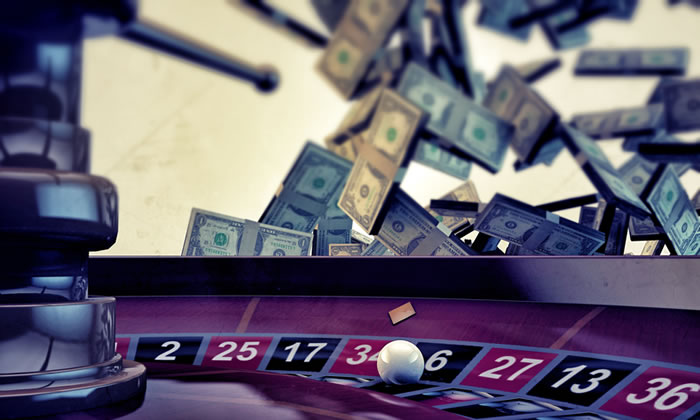A classic casino game, roulette has captivated players for centuries for its ease of play and excitement. The goal of the game is for players to guess where a tiny ball will land on a wheel that spins and features numbered slots that alternate red and black in color. The wheel also features a green "0" slot (or "00" in American roulette), giving the house an edge. In addition to specific numbers, players can wager on groups of numbers or the color of the slot where the ball will land. Roulette is both thrilling and unpredictable as a game of chance.
Key Takeaways
- Mastering roulette basics is key to forming effective strategies.The Martingale strategy centers on doubling bets after a loss to regain losses.The Fibonacci strategy uses a mathematical sequence to determine bet amounts and maximize winnings.Placing specific bets across the table to cover various numbers is the focus of the James Bond strategy.Gradually adjusting bet amounts makes the D'Alembert strategy a safer roulette approach.
While roulette is based on chance, knowing the different bet types can boost your odds of winning. Understanding the fundamentals of the game and the available betting options, such as inside bets (wagers on particular numbers) and outside bets (wagers on larger number groups or colors), is crucial. Players are able to create a customized gameplay strategy by doing this.

Drawbacks of the Martingale Strategy. While there are potential benefits, the Martingale strategy also has notable flaws. One significant drawback is that maintaining the doubling of bets after a string of losses necessitates a substantial bankroll. Additionally, most casinos roulette betting software have betting limits that may hinder continuous doubling of wagers. Remember that roulette is a game of pure chance, and losing streaks don’t guarantee eventual wins.
Using the Martingale Strategy Successfully. Some players continue to use and succeed with the Martingale strategy in spite of these disadvantages. Another popular roulette strategy is the Fibonacci system, which is rooted in a famous mathematical sequence.

As it doesn’t require doubling bets after losses, the Fibonacci strategy is considered less aggressive than the Martingale system. Nevertheless, a large bankroll is still necessary to sustain the betting sequence, particularly in a losing streak. Like any other roulette strategy, the Fibonacci system offers no guarantees, but some players find it a more rational way to manage their bets and potentially win big at the roulette table. The James Bond strategy, named after the famous fictional spy, involves placing specific bets on the roulette table. This strategy covers three table sections: high numbers (19–36), six numbers from 13 to 18, and the "0" pocket. A $140 wager is placed on each of these three sections.
This strategy boosts your chances of winning by covering a wide range of numbers on the wheel. Because it covers a larger area of the wheel with fewer bets, the James Bond strategy is regarded as a more conservative method of roulette betting. However, it’s essential to remember that roulette remains a game of chance, and no strategy can guarantee a winning session. Some players favor complex betting systems, while others appreciate the simplicity and potential big wins of the James Bond strategy.
The D'Alembert strategy, another popular roulette method, involves increasing your bet by one unit after a loss and decreasing it by one unit after a win. This method operates on the idea that it allows for gradual loss recovery and potential profit, unlike the Martingale system. Given that it avoids doubling bets after losses, the D'Alembert strategy is perceived as a safer roulette method. The D'Alembert strategy does not, however, offer any guarantees, just like any betting strategy.
Always remember that roulette is a game of luck, and no strategy can guarantee a win. Due to its cautious approach in managing bets and the potential for significant winnings, some players succeed with the D'Alembert strategy. How the Approach Works. If you win, remove those two numbers from the sequence. After losing, you add your bet amount to the end of the sequence.

Pros and cons. Players who prefer an active method of managing roulette bets might find success with the Labouchere strategy. However, some players might find it challenging to plan ahead and track their betting sequence. Success with the Labouchere Method.
As with all betting methods, the Labouchere strategy doesn’t guarantee success, yet its adaptability and winning potential have brought success to some players. You can increase your chances of winning at the roulette table by utilizing certain betting strategies in addition to some general advice. Setting and sticking to a budget is vital, as it’s easy to get swept up in the excitement and overspend. Being aware of the odds for various roulette bets is crucial, as it helps you make more informed decisions on your wagers.
Leveraging casino bonuses and promotions can further enhance your chances of winning at roulette. Free spins or bonus chips are just two of the exclusive benefits that many casinos provide to roulette players. These extras can help you play longer & possibly win more money. Also, it's critical to manage your bankroll wisely and know when to quit the game, particularly if you're losing a lot of money. In conclusion, you can improve your chances of striking it rich at the roulette table by using a variety of tactics and advice. Whether you favor aggressive systems like Fibonacci or Martingale or lean towards conservative methods like James Bond or D'Alembert, there are strategies available for every player.
In the end, roulette is a game of chance, making it vital to remember that winning is never guaranteed. Nonetheless, understanding roulette fundamentals and applying tried-and-true methods can enhance your chances of securing a substantial win.
Common Questions
What does roulette entail?
Roulette is a popular casino game where players place bets on either a single number, various groupings of numbers, the colors red or black, whether the number is odd or even, or if the numbers are high (19–36) or low (1–18).
How do roulette tactics work?
Roulette tactics involve strategies and techniques employed by players to boost their odds of winning. These tactics can involve betting patterns, bankroll management, and understanding the odds of the game.
Are there proven strategies for winning at roulette?
Even though roulette's randomness makes winning guarantees impossible, some players find strategies that they believe enhance their odds of winning. These strategies include the Martingale system, the Fibonacci system, and the James Bond strategy.
Is it legal to use tactics to win at roulette?
Using tactics and strategies to win at roulette is legal, as long as the player is not cheating or using devices to manipulate the game. However, some casinos have rules about specific tactics, so be sure to understand the particular rules of the casino you’re playing at.
Can roulette tactics guarantee a win?
No roulette tactic can guarantee a win due to the game's random nature and the house edge. While tactics can potentially increase a player's chances of winning in the short term, there is always a risk of losing money in the long run.